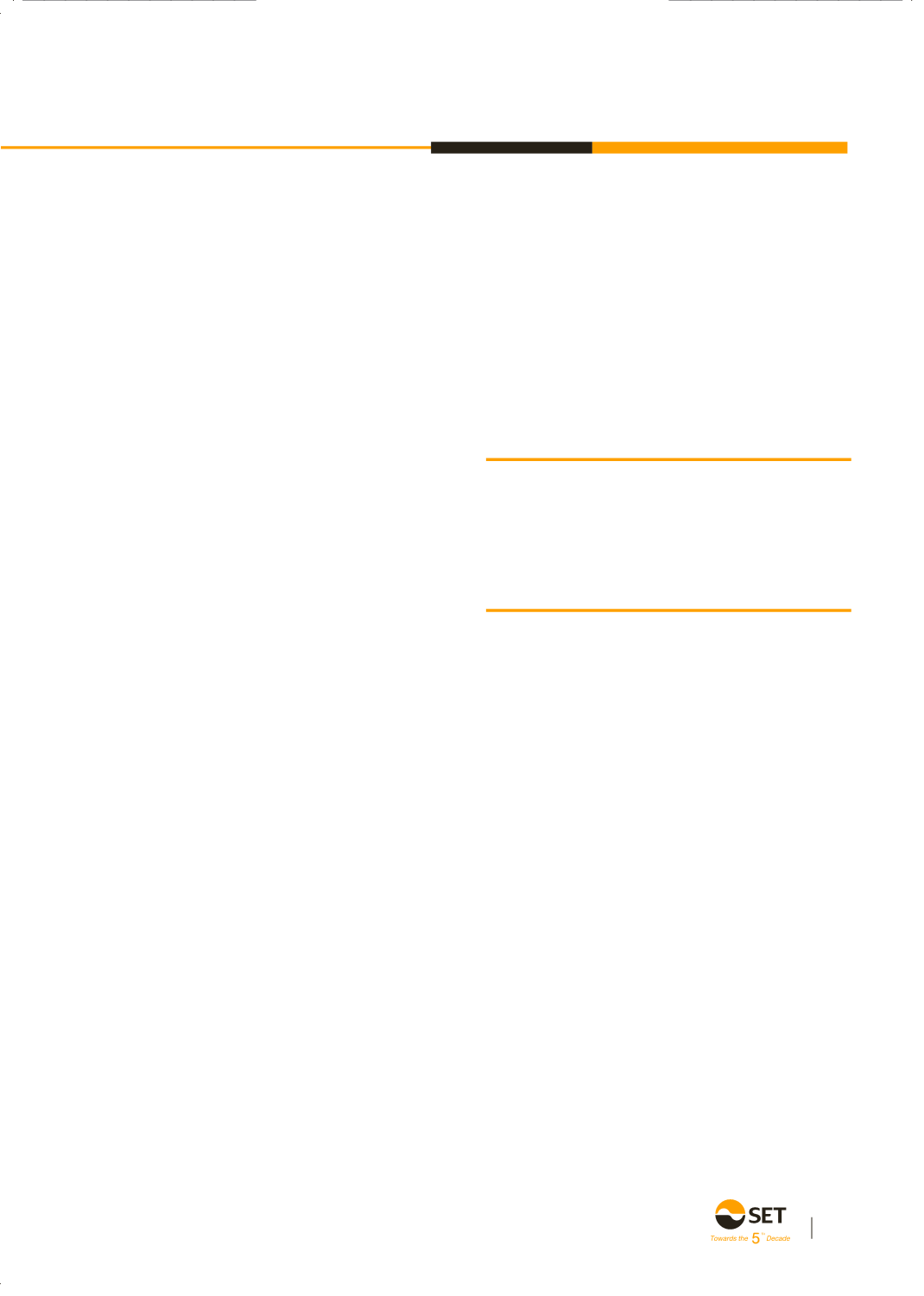

113
Trading investments and available-for-sale investments are
subsequently measured at fair value. The fair value of investments is
based on quoted bid price at the close of business on the statement
of financial position date by reference to the Stock Exchange of
Thailand and the Thai Bond Dealing Centre. The unrealised gains
and losses of trading investments are recognised in statement of
comprehensive revenues and expenses. The unrealised gains and
losses of available-for-sale in investments are recognised in other
comprehensive revenues and expenses.
Held-to-maturity investments are carried at amortised
cost using the effective yield method less impairment loss.
General investments are carried at cost less impairment loss.
A test for impairment is carried out when there is a factor
indicating that an investment might be impaired. If the carrying
value of the investment is higher than its recoverable amount,
impairment loss is charged to the statement of comprehensive
revenues and expenses.
On disposal of an investment, the difference between the
net disposal proceeds and the carrying amount is charged or
credited to the revenues and expenses. When disposing of part
of the Company’s holding of a particular investment in debt
or equity securities, the carrying amount of the disposed part
is determined by the weighted average carrying amount of the
total holding of the investment.
2.8
Accounts receivable and accrued income
Accounts receivable and accrued income are carried at
original invoice amount less allowance for doubtful accounts.
The allowance for doubtful accounts is assessed primarily
on analysis of payment histories and future expectations of
customer payments, assessment of the future cash flows, known
and identified instances of default and consideration of market
trends. Bad debts are written off when incurred and recognised
as part of other expenses in the statement of comprehensive
revenues and expenses.
Land improvements
Buildings
Building improvements
Furniture and fixtures
Office equipment
Vehicles
5 years
10 - 50 years
3 - 30 years
5 - 20 years
5 - 10 years
5 - 7 years
2.9
Property, plant and equipment
Land is stated at cost less impairment losses. Property
and equipment are stated at cost less accumulated depreciation
and impairment losses.
Depreciation is charged to the statement of comprehensive
revenues and expenses on a straight-line basis over the estimated
useful lives of each part of an item of property, plant and
equipment, except for land which is considered to have an
unlimited useful life. The estimated useful lives are as follows:
Management determines the estimated useful lives
and residual values for the Group’s property and equipment.
Management will appropriately revise the residual values and
useful lives of assets when the residual values and useful lives
differ from previous estimations, or it will write-off technically
obsolete assets or assets which have been sold or abandoned.
Where the carrying amount of an asset is greater than its
estimated recoverable amount, it is written down immediately
to its recoverable amount.
Repair and maintenance expenses are charged to the
statement of comprehensive revenues and expenses during
the financial period in which they are incurred. The cost of
major renovation is included in the carrying amount of the asset
when it is probable that future economic benefits in excess of
the originally assessed standard of performance of the existing
asset will flow to the Group. Major renovations are depreciated
over the remaining useful lives of the related assets.
Gains and losses on disposal are determined by comparing
the proceeds with the carrying amount and are included in the
statement of comprehensive revenues and expenses.


















